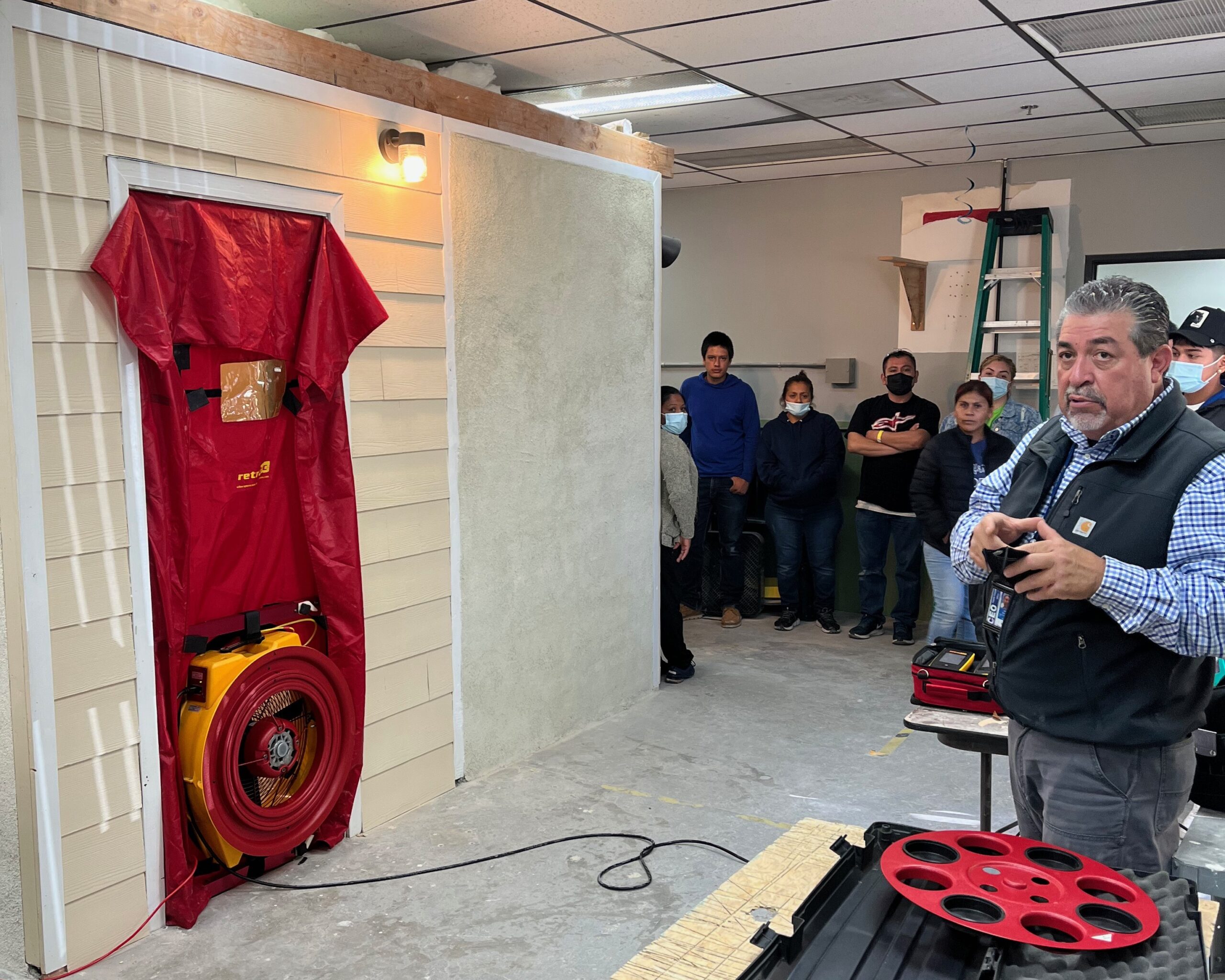
Last month, we highlighted the use of Residential Forms for permitting. Expanding on this challenging area of energy code compliance, this month, we are focusing on the use of CF1R and related forms for occupancy.
Contrary to popular belief, once a new-construction residence has received a permit and is under construction, the CF1R form is still an extremely useful document for the construction team.
First and foremost, the design decisions listed in the Title 24 documents should be compared against the permit plans and in-field construction to ensure the decisions match in all three documents.
The CF1R is a great tool for contractors and subcontractors in this regard, especially when bidding for a job. Understanding all energy-related requirements early in the process will help avoid mix-ups and costly change orders down the road. In addition to construction assemblies, equipment specifications and other construction requirements, the CF1R calls out what HERS (Home Energy Rating System) measures need to be performed for the project by a HERS Rater.
It’s typical for the building inspectors to confirm that the specific HERS verifications have been done by reviewing the CF2R and CF3R documents.
If the HERS requirements have been ignored until the end of the project, these verifications can cause issues, since many of the requirements need to be addressed at earlier phases of construction and could require reopening finished work.
3C-REN has created a document, linked below, called “When to Call Your HERS Rater.” It’s a condensed checklist of what each HERS inspection needs to verify, and when the HERS Rater should be called to perform it. It’s designed to be printed and kept on the job site for at-a glance coordination.
When to Call your HERS Rater Checklist
The HERS FEATURE SUMMARY on the CF1R is the project’s list of required HERS measures. If someone is unfamiliar with the requirements, it’s best to discuss with your contracted (or prospective) HERS Rater. Here are three examples from the form:

This is a great example of why it’s important for the contractor to review the CF1R prior to bidding a project. The HERS Feature Summary shows in Column 3 that building air leakage testing is required. This was triggered for credit by the Title 24 Consultant and is a decision made in the design phase.
This HERS Verification requires that the HERS Rater perform Pre-Test(s) after the Envelope and HVAC sealing and a Final Blower Door Test confirming that the constructed building meets the listed (2) Air Changes Per Hour while the home is tested at 50 pascals, as indicated in Column 05. Column 04 lists the actual cfm of leakage that correlates to the 2ACH50 selected for credit.

In this example, the CF1R calls out Kitchen Range Hood as a HERS verification, which triggers the completion of the CF2R-MCH-32-H and CF3R-MCH-32-H Local Mechanical Exhaust forms. The HERS Rater will verify that the installed Kitchen Range Hood meets the required Hood Capture Efficiency, HVI Certified airflow, and sound rating. The airflow and capture efficiency are based on the dwelling unit’s floor area and if the range is electric or gas.

One of the most common and significant HERS Verifications is Quality Insulation Installation (QII). QII is a Prescriptive measure in the 2022 Residential code, meaning that although you can avoid it using the Performance method, you will take a compliance penalty. The HERS Rater will want to do inspection first at framing and then again during insulation. It’s important to coordinate with your rater to avoid missing milestones that would require redoing work.
For more detailed trainings in high performance building, and energy code compliance, please check out our events calendar 3c-ren.org/calendar-of-events-and-trainings or on-demand trainings 3c-ren.org/on-demand-trainings
And reach out to the Code Coach Hotline anytime for specific guidance on your project! 3c-ren.org/energy-code-coach
